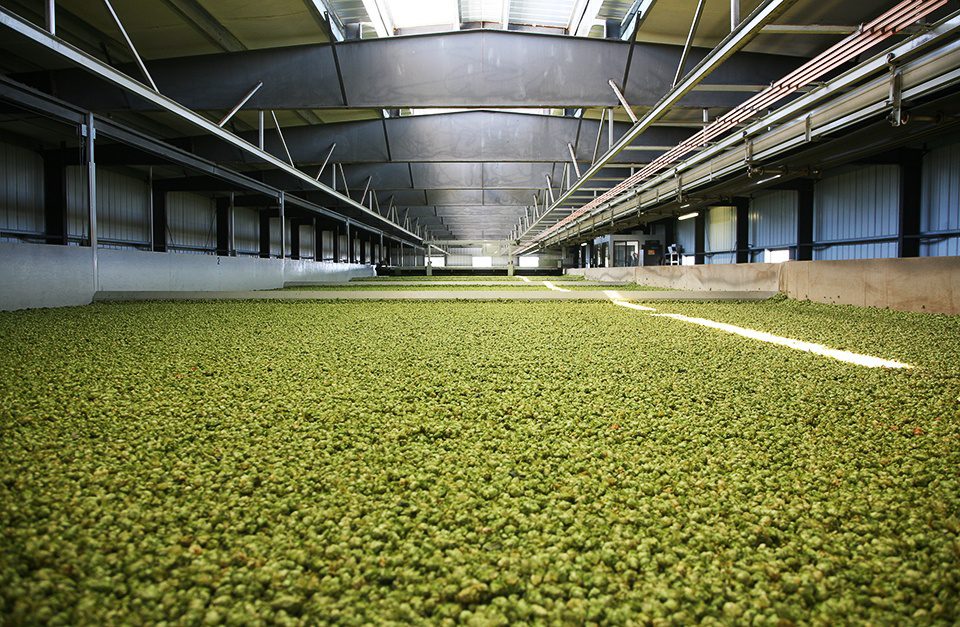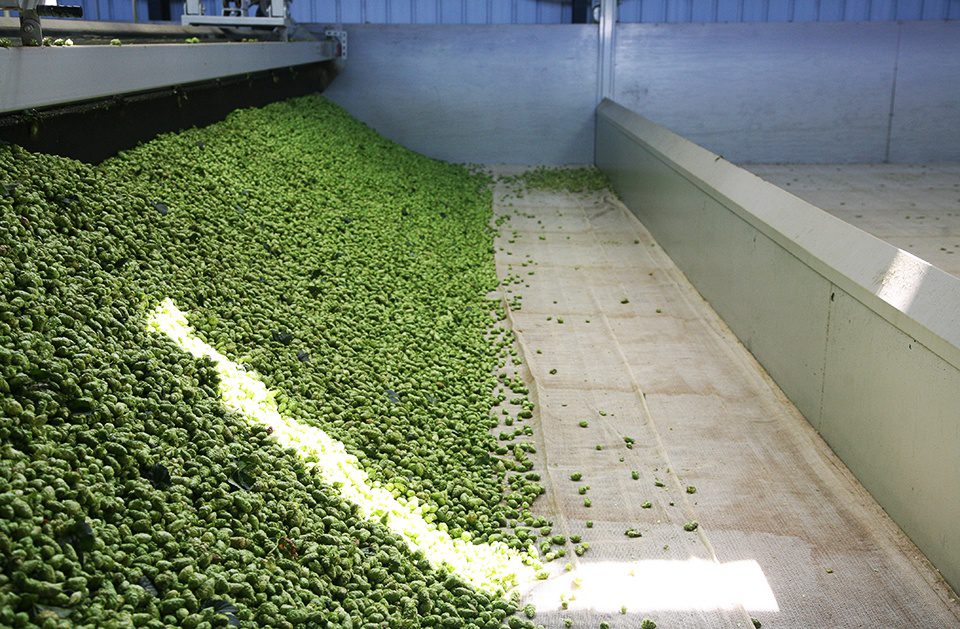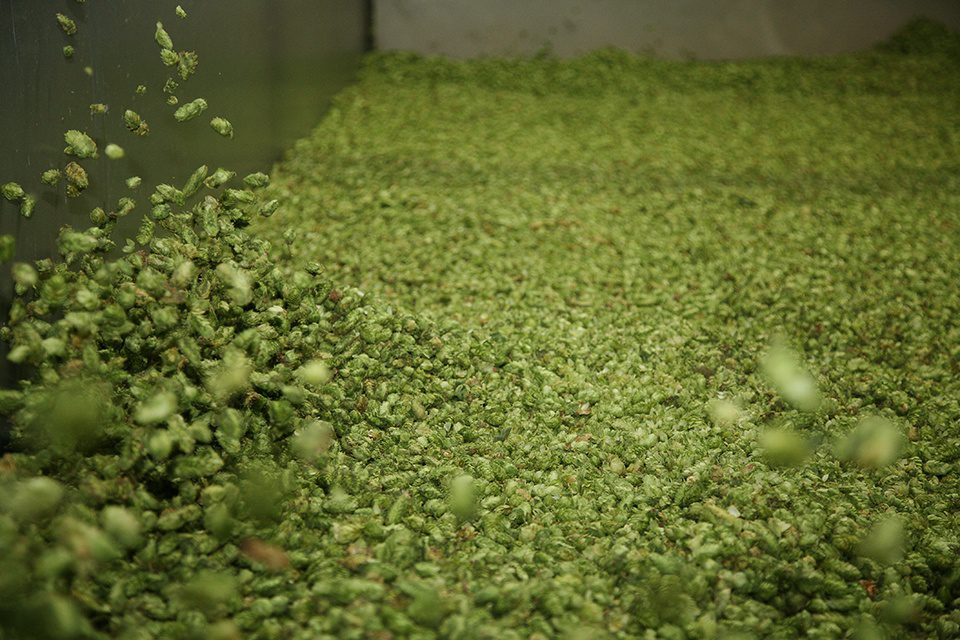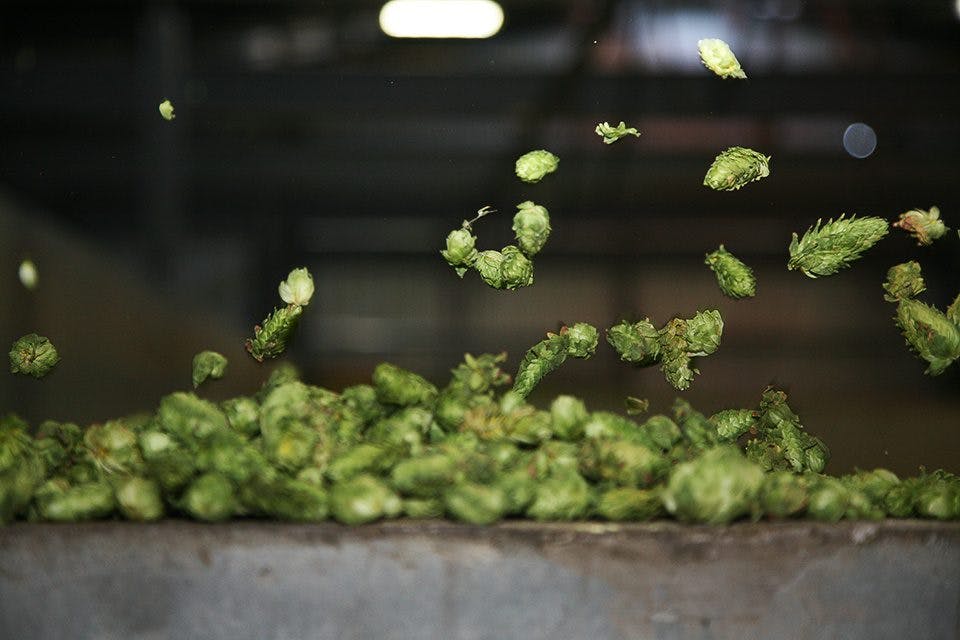A sea of hop popcorn, that’s what it looks like. A beer lover’s ball pit, perhaps.
For a place that’s oppressively hot, a hop-drying facility, or kiln, manages to be rather beautiful. Often football fields in length, the room brims with a beer ingredient we craft brewers cherish, and if there are skylights, majestic sunshine cascades in to make one big hop halo.
It’s a delicate beauty, though. A misstep in the kiln “is probably the easiest way to mess up a hop batch,” said Tom Nielsen, our in-house raw ingredients manager.
“Craft brewers are essentially buying oil” for dry hopping, Tom said, and key factors in the kiln—temperature, air speed and bed depth—can either harness those essential aromatic oils or burn them off.
After hops are picked from the fields and the cones are separated from their bines they are dried in a kiln. Like pouring brownie batter into a pan, hops are evenly spread in stalls anywhere from 18 to 36 inches deep. Fans beneath the hops force hot air up through them. After several hours, when deemed dry after moisture readings—between 9 and 10 percent moisture is ideal—the hops proceed to be baled for storage or shipment to brewers.

Now, think about the perspective of a hop producer. You want to dry your hops as quickly as you can to move volume, translating to more dollars. But we as an industry have recently taken note of inconsistencies in hop lots—less stable, more notes of onion and garlic, the cones shatter easily, and so on.
This isn’t finger pointing, though.
Tom stressed that if producers don’t hear any feedback from brewers, then they understandably have little reason to refine their processes.
For the past two years, Tom has worked with the bright minds of the Hop Quality Group to study hop drying and open a line of communication between brewers and hop producers. This year’s hop harvest was the second during which the Hop Quality Group partnered with hop producers to conduct drying experiments.
Adjustments of temperature, air speed, and bed depth produced surprising numbers and insights we’re hopeful can inform industry improvements. For example, we tinkered with a group of Simcoe® hops:
- Piled 26 inches high + 130° air + high air speed = 3% final oil content
- Piled 36 inches + 150° air + slow air speed = 2% final oil content
Oh, how we want that extra one percent of oil!

This research is young, yet its results suggest immediate action hop producers can take to strengthen the appeal of their product for craft brewers.
“This is a time for reinvestment in the hop industry, right now,” Tom said, and the Hop Quality Group’s findings can inform smarter design decisions, whether it’s simply replacing outdated kiln fans or building a new kiln from the ground up. These aren’t cheap updates, we know, but craft beer’s soaring trajectory is inspiring change.
Anecdotally, the feedback from hop producers has been positive. With their help, we’ll soon hit a well-dried hop every time. A sea of hop popcorn, with no burnt kernels.





